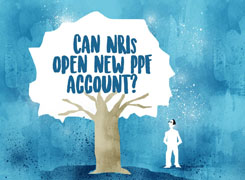Sanjeev Govila | Answer |Ask -Follow
Financial Planner - Answered on Feb 05, 2024
He has over 12 years of experience in financial planning and is a SEBI certified registered investment advisor; he is also accredited with AMFI and IRDA.... more

In NPS Tier1 account, I have deposited 4.5L. With Interest included, the total amount is approx 5.5L. Can I withdraw full amount from Tier-1 account on superannuation?
• If the total corpus is less than or equal to Rs. 5 lakh: You can withdraw the entire amount as a lump sum.
• If the total corpus is more than Rs. 5 lakh: You can withdraw only 60% of the corpus as a lump sum. The remaining 40% has to be used to purchase an annuity plan that will provide you with monthly pension payments after retirement.
• In your case, since your corpus is Rs. 5.5 lakh, you will be able to withdraw only Rs. 3.3 lakh (60% of Rs. 5.5 lakh) as a lump sum. The remaining Rs. 2.2 lakh will have to be used to purchase an annuity plan.
You may like to see similar questions and answers below
Sanjeev Govila | Answer |Ask -Follow
Financial Planner - Answered on Nov 22, 2023
Sanjeev Govila | Answer |Ask -Follow
Financial Planner - Answered on Dec 13, 2023
Ramalingam Kalirajan |10870 Answers |Ask -Follow
Mutual Funds, Financial Planning Expert - Answered on Apr 07, 2025
Dr Dipankar Dutta |1836 Answers |Ask -Follow
Tech Careers and Skill Development Expert - Answered on Dec 05, 2025
Ulhas Joshi |280 Answers |Ask -Follow
Mutual Fund Expert - Answered on Dec 05, 2025
Dr Dipankar Dutta |1836 Answers |Ask -Follow
Tech Careers and Skill Development Expert - Answered on Dec 04, 2025
Ravi Mittal |676 Answers |Ask -Follow
Dating, Relationships Expert - Answered on Dec 04, 2025
Anu Krishna |1745 Answers |Ask -Follow
Relationships Expert, Mind Coach - Answered on Dec 04, 2025
Anu Krishna |1745 Answers |Ask -Follow
Relationships Expert, Mind Coach - Answered on Dec 04, 2025
Mayank Chandel |2562 Answers |Ask -Follow
IIT-JEE, NEET-UG, SAT, CLAT, CA, CS Exam Expert - Answered on Dec 04, 2025
Mayank Chandel |2562 Answers |Ask -Follow
IIT-JEE, NEET-UG, SAT, CLAT, CA, CS Exam Expert - Answered on Dec 04, 2025
Mayank Chandel |2562 Answers |Ask -Follow
IIT-JEE, NEET-UG, SAT, CLAT, CA, CS Exam Expert - Answered on Dec 04, 2025
Mayank Chandel |2562 Answers |Ask -Follow
IIT-JEE, NEET-UG, SAT, CLAT, CA, CS Exam Expert - Answered on Dec 04, 2025
























